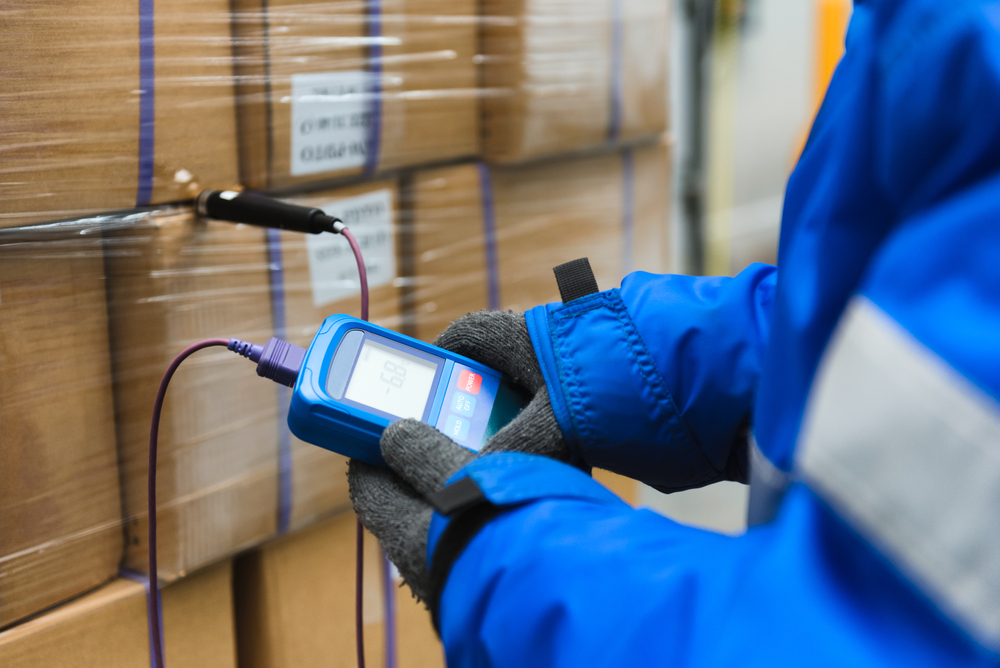REDWOOD LOGIN
Redwood PortalLTL
SCS
SCS Support
Rockfarm

Temperature controlled shipping refers to the transportation goods of that must be kept at a certain temperature from the moment it leaves your facility until it arrives at your customer's door.
Some of these items include things such as fresh produce, perishable foods, and even certain types of life-saving medications that need to be kept refrigerated at all times.
In the event that perishable foods go bad due to extreme temperatures, it can cause it to spoil and become unsuitable or unsafe for consumption. Want to make sure you have no more customers left? Sending them soggy food or flowers will surely do the trick.
And in the case of shipping temperature-sensitive pharmaceuticals…
When certain medications are exposed to even just a few degrees of difference in temperature either above or below what is required, often times that is just enough variation to render them completely useless. That is a huge problem when you are dealing with the transportation of things such as lifesaving medications, clinical tests, and vaccines.
Of course, this is not an exhaustive list, these are, however, the most common goods that require temperature controlled shipping. Regardless of what you are shipping, however, you are responsible for making sure that all temperature requirements are met for every delivery that leaves your dock.
Now, if you’ve never shipped temperature sensitive goods before, you may feel a bit overwhelmed at first. Yes, it is generally handled a bit differently than your standard freight, but it doesn’t need to be any more difficult. All you need is to do is make a plan before you jump in.
Luckily for you, that is exactly what we are going to show you how to do today.
There are a few limitations of temperature controlled shipping to be aware of before shipping your climate sensitive goods.
For starters, you can expect that the refrigerated truck (also referred to as a ‘reefer’ or reefer container) is going to have quite a bit less capacity for your load than what you are probably used to dealing with. These trucks contain temperature control equipment and a few extra layers of insulation in the walls of the trailer which in turn, results in less space for goods.
Secondly, working with a solid route planning system can greatly help cut down on unnecessary delays and minimize risks due to road closures and heavy traffic areas. If for whatever reason your carrier gets stuck in rush hour traffic with a load of frozen goods in the middle of summer in Texas, that reefer container is only going to be able to do so much to keep the temperature right where it needs to be.
Understanding the difference between shipping dry freight versus temperature sensitive perishables and the inherent risks involved, you can take better preventative measures to ensure they do no become an issue.
If you are shipping pharmaceuticals, medical tests or specimens, or other biological material, these items generally have stricter shipping regulations. A lot of these items will fall under stringent FDA and DEA regulations and requirements. We recommend that you familiarize yourself with a few of these before proceeding with packaging your customer's goods.
This part is actually where things can and often do, get just a little bit tricky.
There is no one single regulatory body that has the final word on what constitutes a fully-compliant cold chain. Currently, the regulations that you face may vary, and even wildly sometimes. This is largely dependent on the origin and destination shipping regions, or the category that the goods fall under. For this reason, you will need to do some research to make sure that your goods fulfill regional and federal regulations.
The ones you should use as a reference point are the following FDA regulations:
Temperature controlled shipping is not a service that every carrier specializes in or even offers. And sometimes, even the ones who do offer it, don’t always get it right.
Choosing a reputable carrier when it comes time to ship out products to your customers or to another one of your own facilities seems like a no-brainer. In reality, though, it is one of the most important decisions that you will make. Needless to say, it is going to require doing a fair amount of research.
Take your time with this step.
Ask plenty of questions. Do they carry goods in a reefer container or do they use a refrigerator box? What type of equipment do they use aboard the truck? Is that equipment 100% compliant with all regional and federal regulations? Do they offer any sort of temperature controlled LTL options to allow you to consolidate freight and save money?
The right carrier will have the expertise to walk you through the sometimes complex and overwhelming. Additionally, they will already have all the resources you could possibly need all lined up and ready to go. Anytime you can minimize the amount of legwork you need to do, the better!
We’ve previously discussed the importance of adding value into your supply chain, and this is one of those ways; bringing knowledgeable and resourceful carriers onboard.
With some pre-planning and the right carrier, the process of temperature controlled shipping is actually not that difficult to navigate.
While we discussed the three main key steps in this process, it is always a beneficial idea to work with a 3PL like Redwood Logistics to help you work through the rest, make new connections for your network, and answer any questions you may have along the way.
Reach out to us today and let’s start working on a plan for all your temperature controlled shipping needs!